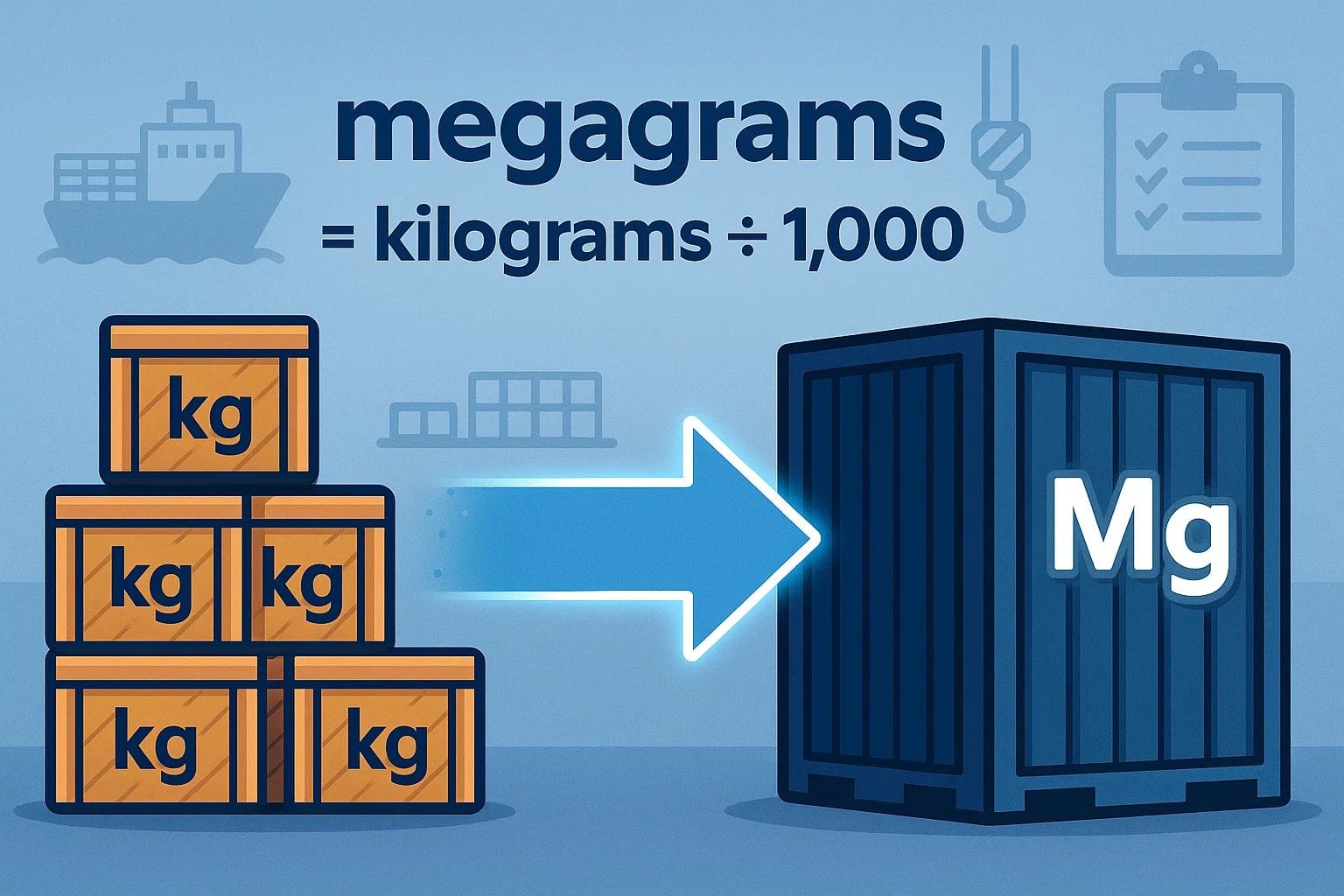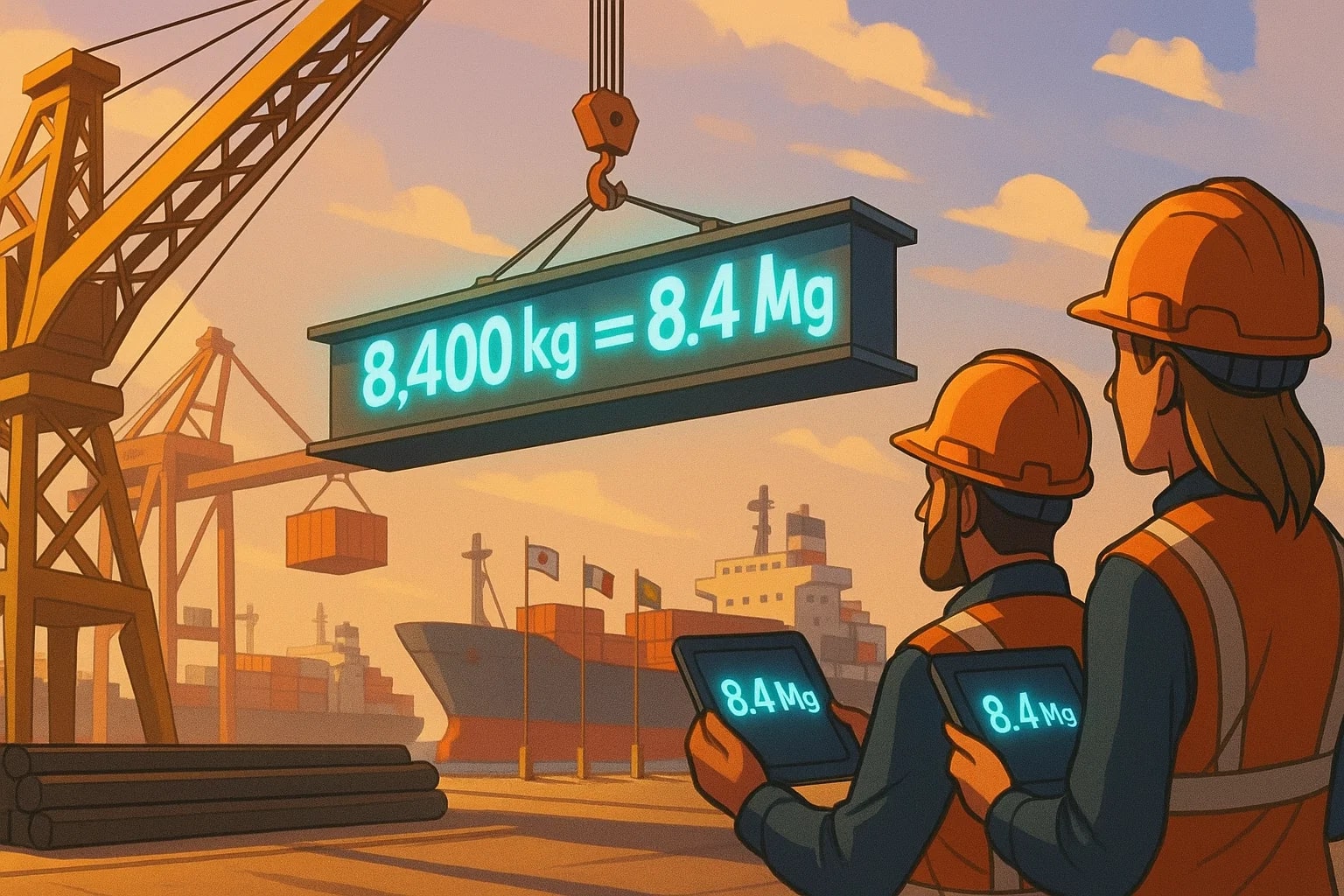kilogram to megagram – How to convert kg to Mg
The kilogram to megagram conversion is a major step up in the metric scale — moving from thousands to millions of grams. This conversion is vital in heavy industries, large-scale shipping, and construction, where massive weights must be recorded in a concise, readable form.
What is a Kilogram (kg)?
A kilogram is the base unit of mass in the International System of Units (SI) and equals 1 000 grams.1 kg = 1 000 g
It’s the standard unit for weighing goods, materials, and products in most of the world.
What is a Megagram (Mg)?
A megagram equals one million grams, or 1 000 kilograms.1 Mg = 1 000 kg
In many contexts, a megagram is called a “metric ton” (t), a unit familiar in freight, industry, and construction.
How to convert kilogram to megagram
The formula is:
megagrams = kilograms ÷ 1 000
Example: A truckload of goods weighing 8 500 kg is 8 500 ÷ 1 000 = 8.5 Mg.
The reverse conversion is:
kilograms = megagrams × 1 000
Example: A shipping container weighing 3.2 Mg is 3.2 × 1 000 = 3 200 kg.

Do you know?
-
Kilogram fact: The current definition of the kilogram is tied to Planck’s constant, ensuring it remains consistent anywhere in the universe.
-
Megagram fact: The Airbus A380, the world’s largest passenger aircraft, has a maximum takeoff weight of about 575 Mg.
Moving Mountains in the Shipping Industry
In the global freight business, cargo is typically weighed in kilograms during initial packing and loading. However, once totals climb into the thousands, switching to megagrams simplifies records and communications.
One shipping company recalls a project moving massive steel beams for a bridge build. Each beam weighed 8 400 kg — a number that quickly filled the loading logs. By converting to megagrams (8.4 Mg), load plans were cleaner and easier to review.
This mattered even more when coordinating with international teams, many of whom referred to metric tons. With megagrams, there was no confusion over scale, no risk of misplaced zeroes, and easier compliance with port documentation requirements.
The shift from kg to Mg didn’t just make the math tidier — it helped ensure safety, efficiency, and seamless coordination across borders.

Thinking Big, Calculating Smart
The kilogram-to-megagram conversion may be simple math, but it’s essential in industries where one misplaced digit could cost millions. Whether you’re logging freight, planning construction, or calculating storage capacity, knowing when to scale up to megagrams keeps operations efficient and error-free.
Handle your conversions instantly with our Weight Converter, and explore more useful tools in our Conversion Tools.

